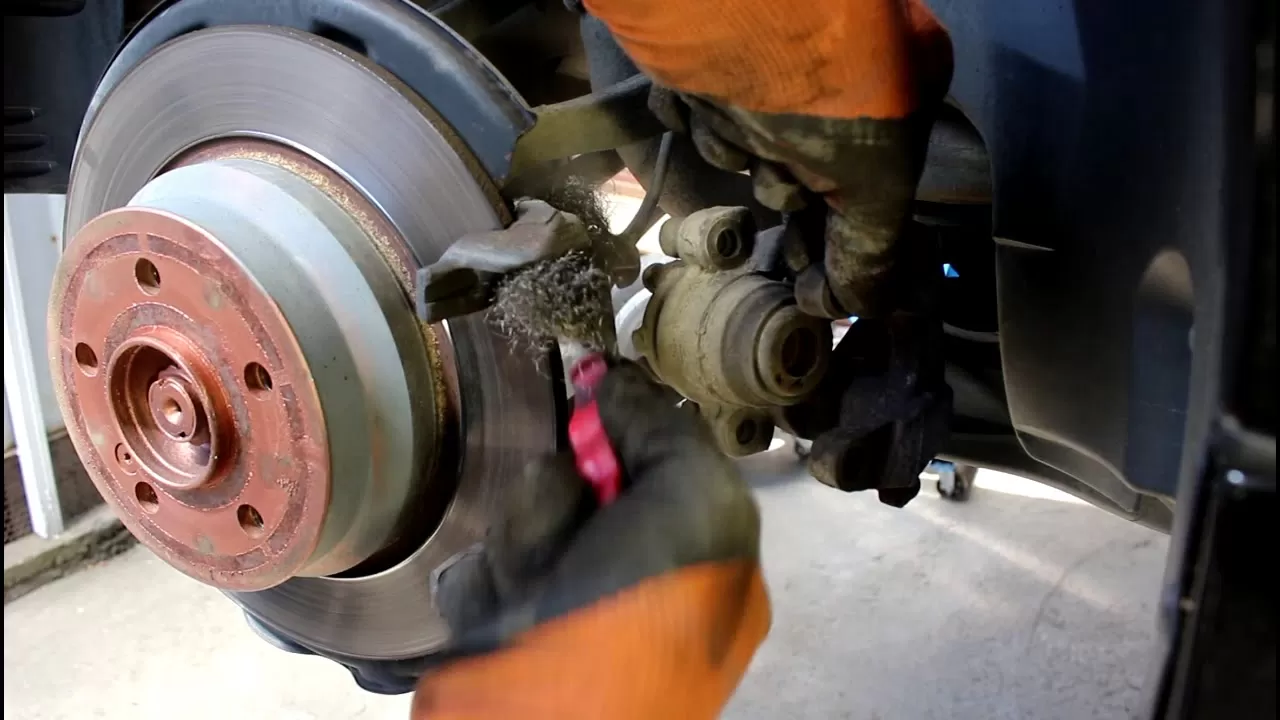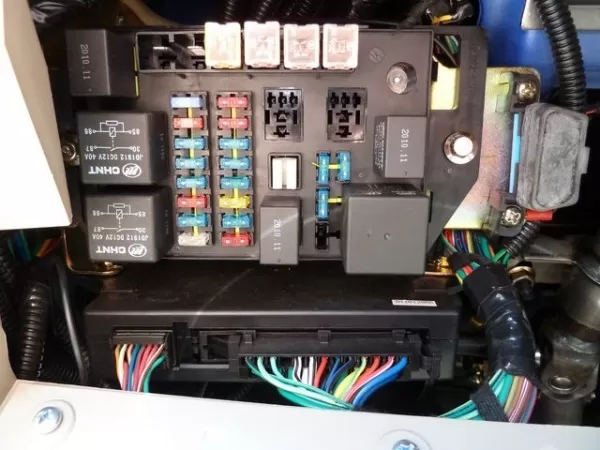
Replacing rear brake pads Mercedes
Content
Learn how to replace rear brake pads (and discs) on Mercedes-Benz vehicles. This guide applies to most Mercedes-Benz models from 2006 to 2015, including C, S, E, CLK, CL, ML, GL, R classes. See the table below for a complete list of applicable models.
What do you need
- Mercedes rear brake pads
- Part Number: Varies by model. See table below.
- Ceramic brake pads are recommended.
- Mercedes brake wear sensor
- Part number: 1645401017
Tools
- Torx socket set
- Brake pad spreader
- Jack and Jack stand
- Wrench
- Delivery
- Screwdriver
- Extreme pressure lubricants
Instructions
- Park your Mercedes-Benz on a level surface. Raise the car and remove the rear wheels.
- Use a flathead screwdriver to remove the metal clip. Push the bracket towards the front of the car to remove it.
- Locate the two bolts that secure the caliper to the bracket. There are two small plugs that need to be removed to see the bolts. Once you remove the bolts you will notice the caliper bolts. These are T40 or T45 bolts. Some models require a 10mm wrench.
- Disconnect the brake pad wear sensor.
- Remove the clip from the bracket.
- Insert the piston into the brake caliper with brake pad distributor. If you don't have a brake master cylinder, use a flathead screwdriver to push in the piston as shown in the picture below. Removing the brake reservoir cap under the engine compartment will make it easier to press the piston into the caliper.
- If you are changing rotors, remove the two 18mm bolts that secure the bracket to the rear wheel assembly.
- Remove the T30 screw from the rotor. Release the rear parking brake. Once the screw is removed, the rotor can be removed. If the rotor is rusty, it is difficult to remove it. If so, use a penetrating liquid and leave it on for at least 10 minutes. Use a rubber mallet to pry out the old rotor. Make sure the car is safe and not rolling.
- Clean the rear hub and bracket of debris and rust. Install a new Mercedes rear disc. Install the rotor mounting bolt.
- Install the bracket and tighten the 18mm bolts to specification.
- Install a new Mercedes brake wear sensor on new pads. You can reuse an old wear sensor if the sensor wires are not exposed. If the brake pad wear sensor wires are exposed or there is a "Brake pad wear" warning on the dashboard, you will need a new sensor.
- Install new Mercedes rear brake pads. DO NOT USE LUBRICANT OR WRINKLE PASTE ON GASKET AND ROTOR SURFACE.
- Remember to apply anti-slip lubricant to the back of the brake pads and to the area where the brake pads slide on the bracket. Apply grease to the guide pins. Attach the clip to the bracket.
- Tighten the dowel pins to specification.
- The typical torque range is 30 to 55 Nm and varies by model. Call your dealer for recommended torque specifications for your Mercedes-Benz.
- Connect the brake pad wear sensor. Install the bar and tighten the lug nuts.
- If you have disabled the SBC pump, connect it now. Start the vehicle and depress the brake pedal several times until the pedal becomes difficult to depress.
- Get your brake fluid checked and test drive your Mercedes-Benz.
Notes
- If your Mercedes-Benz is equipped with the SBC brake system (common on early E-Class W211 and CLS models), you must disable it before you can work on the brake system.
- Recommended method. Disable the SBC brake system using Mercedes-Benz Star Diagnostics if your vehicle has SBC brakes.

Alternative method. You can disable the SBC brakes by disconnecting the wiring harness from the ABS pump. A brake failure warning will appear on the instrument cluster, but it will disappear when the ABS pump is turned on. If the SBC pump is turned off using this method, a DTC is stored in the ABS or SBC control unit, but it is cleared when the ABS pump is turned on again.- Keeping the SBC active. If you choose not to disconnect the SBC pump, do not open the vehicle door or lock or unlock the vehicle as the brakes will automatically apply. Be very careful when working on the brakes. If the SBC pump is activated with the caliper removed, it will put pressure on the piston and brake pads, which could cause injury.
Mercedes Rear Brake Pad Part Numbers
- Mercedes rear brake pads
- class c
- Rear brake pads W204
- 007 420 85 20 or 006 420 61 20
- Rear brake pads W205
- TO 000 420 59 00 TO 169 540 16 17
- Rear brake pads W204
- E-Class/CLS-Class
- Rear brake pads W211
- 004 420 44 20, 003 420 51 20, 006 420 01 20, 0074201020
- Rear brake pads W212
- 007-420-64-20/0074206420, 007-420-68-20/0074206820, 0054209320
- Rear brake pads W211
- Lessons
- Rear brake pads W220
- 003 420 51 20, 006 420 01 20
- Rear brake pads W221
- К 006-420-01-20-41 К 211-540-17-17
- Rear brake pads W222
- 0004203700, 000 420 37 00/0004203700, A000 420 37 00/A0004203700, A000 420 37 00/A0004203700
- Rear brake pads W220
- Machine learning class
- Rear brake pads W163
- 1634200520
- Rear brake pads W164
- 007 420 83 20, 006 420 41 20
- Rear brake pads W163
- GL-class
- Rear brake pads Х164
- R-class
- Rear brake pads W251
- class c
Torque specifications
- Brake caliper bolts - 25 Nm
- Caliper caliper - 115 Nm
Applications
This manual applies to the following vehicles.
Show Apps
- 2005-2011 Mercedes-Benz G55 AMG
- 2007-2009 Mercedes-Benz GL320
- 2010-2012 Mercedes-Benz GL350
- Mercedes-Benz GL450 2007-2012
- Mercedes-Benz GL550 2008-2012
- 2007-2009 Mercedes-Benz ML320
- 2006-2011 Mercedes-Benz ML350
- 2006-2007 Mercedes-Benz ML500
- 2008-2011 Mercedes-Benz ML550
- 2007-2009 Mercedes-Benz R320
- 2006-2012 Mercedes-Benz R350
- 2006-2007 Mercedes-Benz R500
- 2008-2014 Mercedes CL63 AMG
- 2008-2014 Mercedes CL65 AMG
- 2007-2011 Mercedes ML63 AMG
- Mercedes R63 AMG 2007
- 2008-2013 Mercedes C63AMG
- 2007-2013 Mercedes C65AMG
The typical cost to replace Mercedes-Benz rear brake pads averages $100. The average cost to replace brake pads at an auto mechanic or dealer is between $250 and $500. If you plan on replacing the rotors, the cost will be two to three times more than just replacing the brake pads. Old rotors can be rotated and reused if they are thick enough.

